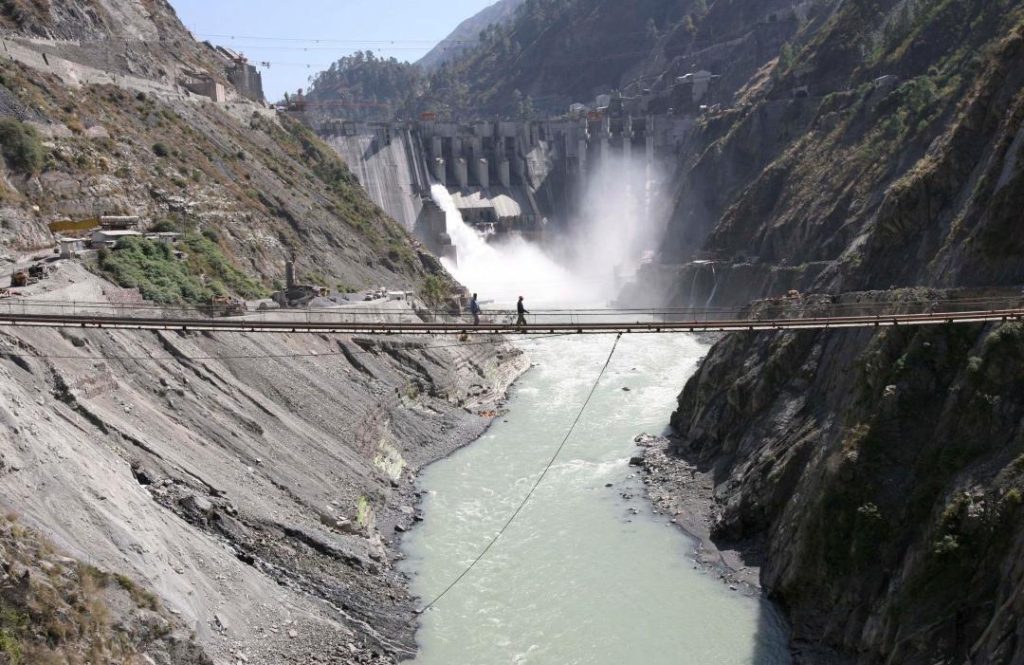
What Actions Has India Taken Against Pakistan After Suspending Indus Waters Treaty?
A week after India’s suspension of the Indus Waters Treaty over the Pahalgam terror attack, the government has reportedly begun increasing reservoir storage capacities by removing sediment at two hydroelectric projects in Jammu and Kashmir. Additionally, India is expected to accelerate the construction of six stalled hydroelectric projects in the region and has shut the gates of Baglihar and Salal dams, both located on the Chenab river. These actions are seen as a strong response from India to Pakistan’s continued support for terrorism and a move to assert its dominance over the Indus Waters Treaty.
The Indus Waters Treaty was signed in 1960 by India and Pakistan, with the aim of sharing the waters of the Indus River and its tributaries. The treaty divides the waters of the Indus River into three categories: the eastern rivers, which include the Ravi, Beas, and Sutlej; the western rivers, which include the Jhelum, Chenab, and Sutlej; and the Indus River itself. The treaty also sets out the rules for the use of these waters, including the construction of dams and canals.
However, relations between India and Pakistan have deteriorated significantly since the Pahalgam terror attack, which killed 40 Central Reserve Police Force (CRPF) personnel. Pakistan-based terrorist group Jaish-e-Mohammed (JeM) claimed responsibility for the attack, sparking widespread outrage and demands for action from India.
In response to the attack, India suspended the Indus Waters Treaty, citing Pakistan’s continued support for terrorism and its failure to take action against terrorist groups operating from its soil. The suspension of the treaty has sparked concerns about the potential impact on the region’s water resources and the possibility of a water war between India and Pakistan.
Despite these concerns, India has pressed ahead with its plans to increase reservoir storage capacities and accelerate the construction of hydroelectric projects in Jammu and Kashmir. The government has reportedly begun removing sediment from the reservoirs of two hydroelectric projects, the Dul Hasti and the Uri projects, to increase their storage capacities. Additionally, India is expected to accelerate the construction of six stalled hydroelectric projects in the region, including the Shahpur Kandi project, the Bursar project, and the Pakal Dul project.
The construction of these hydroelectric projects is seen as a strategic move by India to assert its dominance over the Indus Waters Treaty and to reduce its dependence on Pakistan. The projects are expected to generate significant amounts of electricity, reducing India’s reliance on imported coal and natural gas. Additionally, the projects are expected to provide a significant boost to the local economy, creating jobs and stimulating growth.
India has also shut the gates of Baglihar and Salal dams, both located on the Chenab river. The Baglihar dam is a 450-megawatt hydroelectric project located in the Kishtwar district of Jammu and Kashmir, while the Salal dam is a 690-megawatt hydroelectric project located in the Ramban district of Jammu and Kashmir. The shutdown of these dams is seen as a move by India to assert its control over the Indus Waters Treaty and to reduce its dependence on Pakistan.
Pakistan, on the other hand, has condemned India’s decision to suspend the Indus Waters Treaty, calling it a “unilateral” and “unacceptable” move. Pakistan has also accused India of violating the treaty and of attempting to disrupt the region’s water resources. However, India has rejected these accusations, citing Pakistan’s continued support for terrorism and its failure to take action against terrorist groups operating from its soil.
The suspension of the Indus Waters Treaty has sparked concerns about the potential impact on the region’s water resources and the possibility of a water war between India and Pakistan. However, India’s actions suggest that it is determined to assert its dominance over the treaty and to reduce its dependence on Pakistan. The construction of hydroelectric projects and the shutdown of dams are seen as a strategic move by India to assert its control over the region’s water resources and to reduce its reliance on Pakistan.
In conclusion, India’s suspension of the Indus Waters Treaty and its subsequent actions, including the increase in reservoir storage capacities and the shutdown of dams, are seen as a strong response to Pakistan’s continued support for terrorism. The construction of hydroelectric projects and the shutdown of dams are a strategic move by India to assert its dominance over the region’s water resources and to reduce its dependence on Pakistan. The situation is likely to remain tense in the coming days, with both countries dug in on their positions. However, the suspension of the treaty and India’s subsequent actions suggest that the country is determined to assert its control over the region’s water resources and to reduce its reliance on Pakistan.
Source:



